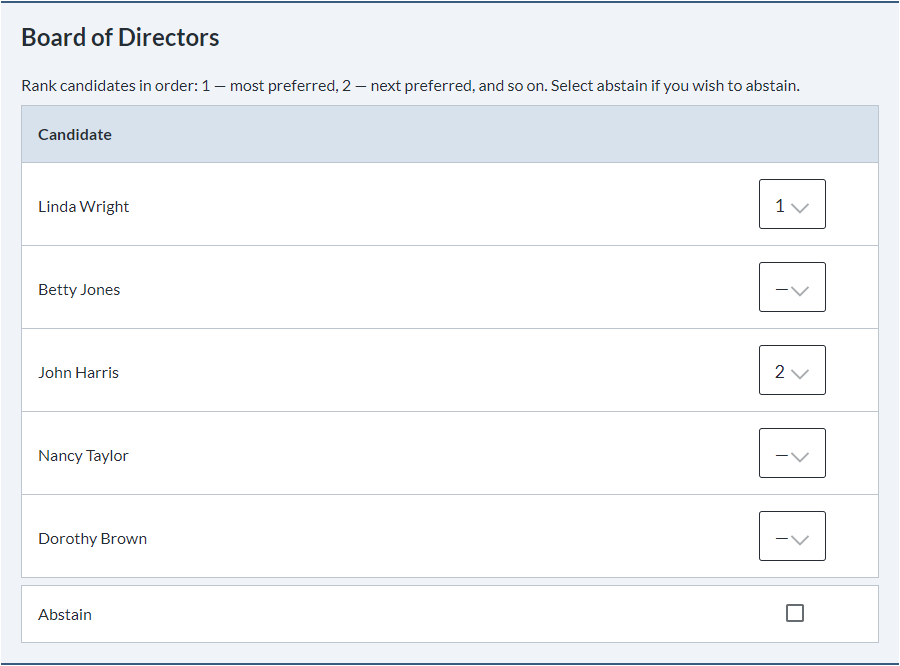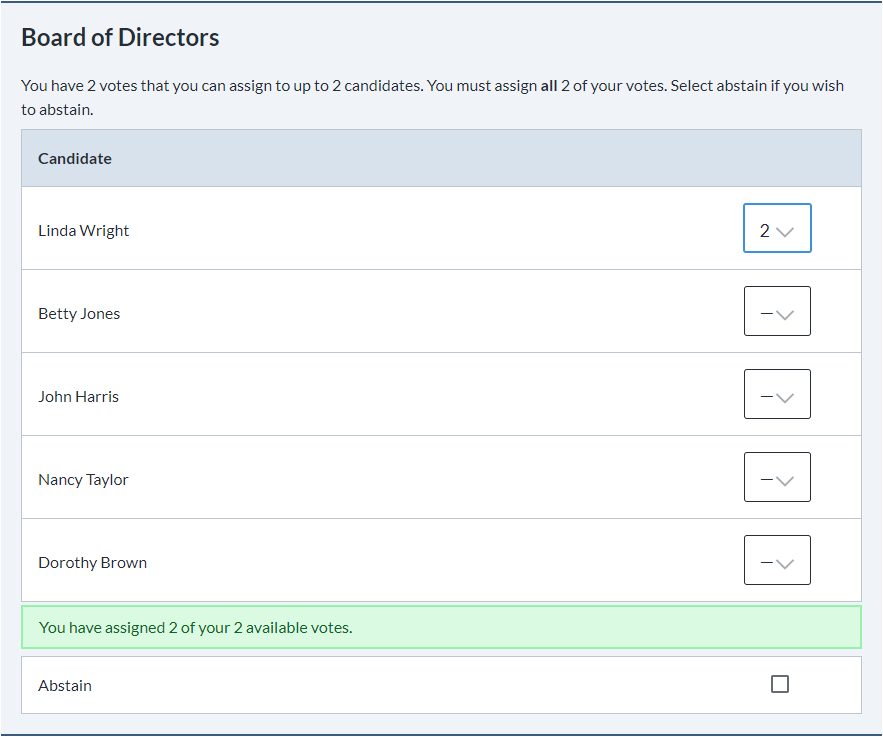What is a Board of Directors Election?
A Board of Directors election is an election where voting members elect new/returning Board members for their organization. These elections are very common, as most organizations have a Board of Directors. Since a Board has a heavy influence on the leadership of an organization, these elections are extremely important!
One of the things that makes a Board election different from a standard Executive Officer election is that often, Board of Director elections process involve multiple candidates running for multiple available seats on the Board. This is known as a “multi-winner” election (as opposed to a “single-winner” election). This makes Board elections similar to any election where you have multiple winners, such as electing Committee or Team Members.
Board members are usually given staggered terms in order to prevent all of the Board positions from being available for election at once. This ensures that there are always experienced, knowledgeable Directors on the Board, along with new Directors who can bring fresh ideas to the table.
An organization’s bylaws should contain specific information on how the Board of Directors are elected, the length of the term served for each Director, and how many voting members of the organization must vote in order for the Board of Directors election to be valid (i.e. quorum).
Possible Voting Methods for a Board of Directors Election

Because Board elections can be multi-winner elections, you need a voting method that allows you to have multiple winners. ElectionBuddy’s plurality voting method will allow you to put multiple candidates up for multiple vacancies on the Board.
This also works for Committee or School Board elections, and any election where you are voting for multiple candidates in a multi-vacancy position.
ElectionBuddy has other voting methods that can be used in a multiple-candidate, multiple-vacancy position. These voting methods include:

Preferential
We use STV to calculate the results for a multiple-vacancy preferential election. Preferential is an excellent option for multiple-winner elections because voters can indicate their preference for a specific candidate relative to the others. In contrast, with plurality, voters are only stating that the candidates they’ve chosen are preferred over the ones they didn’t — there is no way to gauge preference among the candidates they did choose. This gives a more precise picture of how the voters truly feel about the candidates.
Cumulative

The cumulative voting method, like the preferential voting method, does allow for voters to express a more accurate degree of preference. This is because voters can cast more than one vote for any candidate that they really prefer over the others. ElectionBuddy will still pick multiple winners even if a voter can choose to vote for only one candidate.
Common Ballot Features Used in Board of Directors Elections
Common features used when building a ballot for a Board of Directors election process include:
-
The “Abstain” option, which allows for voters to abstain from voting on the Board of Directors ballot question.
-
Allowing for write-ins, which can be helpful in multiple ways. Along with providing an alternative voting opportunity for voters who do not like any of the candidate(s) listed for the Board of Directors position, it can also be useful for collecting nominations during the election process when not enough candidates are available to fill all the vacant seats on the Board.
-
Random order of your listed candidates changes the order of the candidates each time a voter opens the ballot. This helps eliminate the Ballot Order Effect, which states that candidates are more likely to be voted for when their position on the ballot is higher in relation to the other candidates.
-
Candidate profiles, which are an excellent way to inform your voters about the candidates running for the position. This allows them to make an educated choice on which candidate they should vote for without forcing them to leave the ballot to look up the information on a different web page.